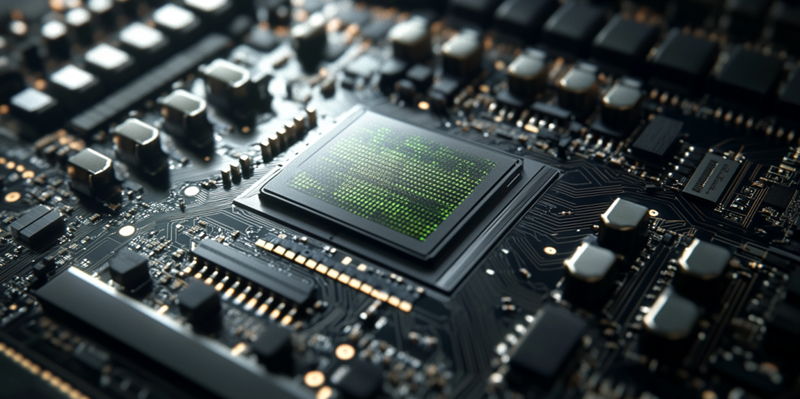ZLUDA, an open-source library initially designed to facilitate Intel GPUs running on NVIDIA’s software stack, is undergoing a remarkable resurgence. The library’s journey, which saw it embraced and then discontinued by AMD, is now taking an exciting turn with the support of an anonymous sponsor. This renewed effort seeks to enhance ZLUDA’s capabilities for AI and machine learning (ML) workloads, marking a significant shift towards multi-GPU compatibility and interoperability across different architectures.
From Discontinuation to Revival
Initial Development and Discontinuation
In its first life, ZLUDA represented a major step forward in GPU computing by enabling Intel GPUs to run on NVIDIA’s software stack. AMD furthered this initiative by integrating access to NVIDIA’s CUDA on their AI hardware, demonstrating a major victory for the open-source community. However, despite the enthusiasm and technological promise, AMD discontinued ZLUDA due to legal concerns, which left many in the community disheartened. The cessation of development highlighted the complexities and challenges involved in creating interoperable GPU libraries. The story took an unexpected turn with the entry of an anonymous sponsor, who revitalized ZLUDA’s development. This mystery backer is not only providing the necessary funding but also guiding the project towards more ambitious goals. The renewed focus is squarely on AI and ML workloads, areas that demand powerful compute capabilities and versatile hardware solutions. By broadening ZLUDA’s scope to include multi-GPU compatibility, the project now aims to leverage the strengths of various architectures, including those from AMD and NVIDIA. This shift in focus from professional workloads to AI/ML applications signifies a strategic move to address the ever-growing demands of these fields.
Legal Concerns and Community Impact
When AMD discontinued ZLUDA, the decision was driven by legal complexities surrounding the integration of CUDA, NVIDIA’s parallel computing platform and application programming interface (API), on non-NVIDIA hardware. This legal tangle posed significant barriers to the continued development and deployment of ZLUDA. The cessation of AMD’s involvement underscored the potential legal landmines in advancing open-source solutions within a competitive and proprietary ecosystem. Despite these challenges, the support from the anonymous sponsor has injected new life into ZLUDA, rekindling the enthusiasm within the open-source and tech communities. The community’s reaction to ZLUDA’s revival has been overwhelmingly positive. Many view this comeback as a harbinger of innovation and increased accessibility in AI computing. The anonymous sponsorship has added an element of intrigue, suggesting that there may be significant financial and technical resources behind the project. This development could potentially lead to groundbreaking advancements in AI computing power, fostering a more inclusive and competitive environment in the tech industry. The renewed vigor in ZLUDA’s development is not just a technical achievement but a testament to the resilience and collaborative spirit that defines the open-source community.
Technical Advancements and Future Prospects
Multi-GPU Compatibility and Broader Architectures
The most notable advancement in ZLUDA’s revived development is its focus on "multi-GPU" compatibility. This new direction aims to make the library adaptable to a variety of architectures, including AMD and NVIDIA GPUs. This shift in strategy reflects a broader industry trend towards hardware-agnostic solutions, which can provide significant performance boosts and flexibility. By enabling multi-GPU setups, ZLUDA will facilitate enhanced performance for AI and ML workloads, which often require massive compute power and efficient parallel processing capabilities.
The project aims to support critical AI libraries such as Llama.cpp, PyTorch, and TensorFlow, which are widely used in research and commercial applications. This compatibility will require a reworking of NVIDIA’s code paths to ensure broader GPU vendor compatibility, posing both technical and logistical challenges. Testing has already started with AMD’s RDNA GPUs, and early results are promising. ZLUDA is expected to support RDNA1+ architectures and the ROCm 6.1+ compute stack, highlighting its potential to become a versatile tool for AI researchers and developers. This focus on multi-GPU compatibility could dismantle existing exclusivity in AI software stacks, leading to more efficient and accessible AI solutions.
Project Timeline and Expected Impact
Andrzej Janik, the leading developer of the revived ZLUDA project, has provided an optimistic timeline, estimating that the library will reach maturity within a year. If achieved, this timeline will mark a rapid development pace for such a complex and ambitious project. The successful implementation of ZLUDA could dramatically alter the landscape of AI and ML computing, lowering barriers and fostering a more competitive environment. By blending the strengths of different GPU architectures, ZLUDA has the potential to offer unparalleled performance for AI workloads, democratizing access to powerful compute resources. The broader implications of ZLUDA’s success extend beyond technical performance. This development aligns with the industry’s growing emphasis on open-source solutions and interoperability, which enhance innovation and performance across hardware platforms. By providing a versatile and powerful tool for AI computing, ZLUDA could spur further advancements in the field, encouraging more developers to adopt open-source methods. The project’s success could also attract additional investment and interest in similar initiatives, driving a virtuous cycle of innovation and accessibility in AI and ML technologies.
Conclusion
ZLUDA, an open-source library originally created to enable Intel GPUs to run on NVIDIA’s software stack, is experiencing a thrilling revival. The library has had an eventful journey; it was initially welcomed and then later discontinued by AMD. However, it is now enjoying a resurgence thanks to the backing of an anonymous sponsor. This newfound support aims to bolster ZLUDA’s capabilities specifically for AI and machine learning (ML) workloads. The initiative represents a significant shift, steering the library towards enhanced multi-GPU compatibility and increasing interoperability across various hardware architectures. These improvements could dramatically expand the range of applications and benefits for users, making ZLUDA a more versatile tool in the increasingly complex field of computing. By bridging the gap between different GPU ecosystems, this library could pave the way for more seamless and efficient processing power utilization in AI and ML tasks. This could ultimately lead to more groundbreaking innovations and advancements in these rapidly evolving disciplines.

